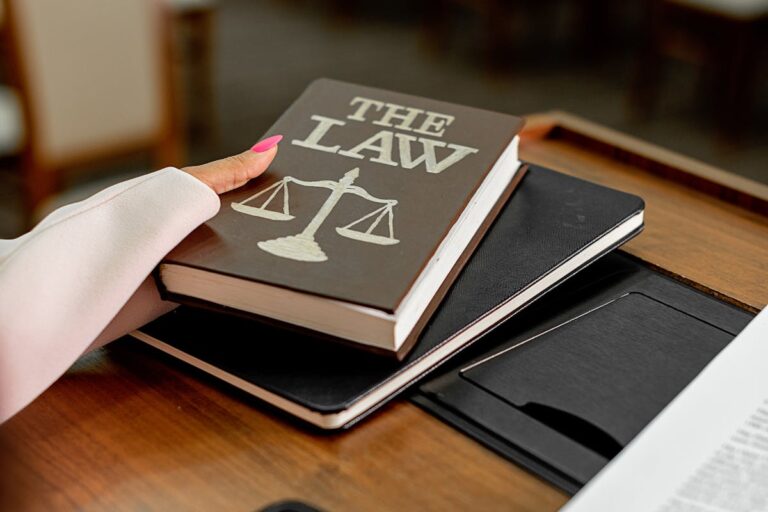Intersectional Discrimination: Legal Protection When Multiple Identities Face Combined Workplace Bias
Intersectional discrimination occurs when employees face bias based on the combination of two or more protected characteristics—like race and gender, age and disability, or sexual orientation and religion. This complex form of workplace discrimination creates unique challenges that differ from single-axis bias, requiring specialized legal understanding and strategic approaches.
The concept emerged from legal scholar Kimberlé Crenshaw’s groundbreaking 1989 research, which revealed how traditional civil rights law failed to protect individuals who experienced discrimination based on multiple identities. Today, federal courts increasingly recognize intersectional claims under Title VII of the Civil Rights Act of 1964, while states like California have enacted specific legislation addressing this gap in protection. The EEOC received 88,531 new charges of workplace discrimination in fiscal year 2024, representing a 9.2% increase, with research showing employees with multiple marginalized identities face twice the risk of retaliation compared to those with single protected characteristics.
What Is Intersectional Discrimination and How Does It Work?
Intersectional discrimination represents a unique form of workplace bias that cannot be understood by examining each protected characteristic separately. When you experience this type of discrimination, the bias stems from the specific combination of your identities, creating obstacles that individuals with only one of those characteristics might not face.
How Multiple Protected Characteristics Combine
Think of intersectional discrimination as creating an entirely new category of bias. For example, a Black woman might face discrimination that’s different from what Black men experience (who may not encounter gender-based salary negotiations) and different from what white women face (who may not deal with racial stereotypes about communication styles). The discrimination targets the intersection where these identities meet.
The protected characteristics that commonly intersect include:
- Race and ethnicity
- Gender and sex
- Age
- Disability status
- Sexual orientation and gender identity
- Religion
- National origin
At our firm, we often see cases where clients initially struggle to identify their experience as discrimination because it doesn’t fit neatly into traditional single-category frameworks that many people understand.
Kimberlé Crenshaw’s Intersectionality Theory
Legal scholar Kimberlé Crenshaw introduced intersectionality in her 1989 article “Demarginalizing the Intersection of Race and Sex,” developing it further in her 1991 work “Mapping the Margins.” Her theory emerged as a direct response to inadequacies in Title VII, which uses “or” when listing protected categories, forcing plaintiffs to choose single bases for discrimination claims.
Crenshaw’s intersectionality framework revealed how traditional civil rights approaches failed to capture the full scope of discrimination experienced by individuals with multiple marginalized identities. Her work demonstrated that discrimination isn’t just additive—it’s not simply racism plus sexism—but creates entirely new forms of bias that require specific legal recognition and remedies.
Legal Recognition of Intersectional Discrimination Claims
The legal landscape for intersectional discrimination has evolved significantly, with courts increasingly acknowledging that bias based on multiple protected characteristics violates existing civil rights laws. This recognition provides you with legal pathways to seek justice when you experience compound discrimination.
Federal Protection Under Title VII
Federal courts have increasingly recognized intersectional discrimination as a violation of Title VII of the Civil Rights Act of 1964. The EEOC has formally recognized this concept since 2016, defining it as “discrimination which occurs when someone is discriminated against because of the combination of two or more protected bases.”
The legal theory operates under the understanding that Title VII’s protection extends beyond single-axis discrimination. Courts apply various analytical frameworks, including:
- Plus theory: Examining how one protected characteristic intensifies discrimination based on another
- Intersectional framework: Analyzing the unique discrimination that emerges from combined identities
- Sex-plus analysis: Originally developed for gender discrimination but expanded to other intersecting characteristics
Landmark cases like Lam v. University of Hawaii represent the “high water mark” of intersectional Title VII jurisprudence, where the Ninth Circuit explicitly adopted an intersectional framework for analyzing discrimination claims.
California’s Groundbreaking SB 1137 Law
California’s Senate Bill 1137, signed by Governor Newsom on September 27, 2024, and effective January 1, 2025, explicitly covers claims based on combinations of protected characteristics under the Fair Employment and Housing Act (FEHA). This groundbreaking legislation recognizes intersectional discrimination involving any combination of protected classes including sex, race, color, religion, ancestry, national origin, disability, medical condition, and others.
The law represents a significant advancement in civil rights protection, providing clear legal recognition for intersectional claims and establishing California as a leader in comprehensive anti-discrimination legislation. Other states are closely watching this development as a potential model for similar legislation.
Common Examples of Intersectional Discrimination in the Workplace
Understanding how intersectional discrimination manifests in real workplace situations helps you recognize when you might be experiencing this form of bias. These examples illustrate patterns that differ significantly from single-axis discrimination.
Black Women Facing Unique Workplace Bias
Black women encounter workplace discrimination that combines racial and gender biases in ways that create distinct challenges. They typically earn only 64 cents for every dollar paid to white, non-Hispanic men, and often face criticism as “too bossy” or having “tone issues”—treatment that differs from what Black male managers or white female managers experience.
Common intersectional discrimination against Black women includes:
- Being excluded from informal networks due to both racial and gender dynamics
- Facing harsher performance evaluations that criticize leadership styles acceptable in others
- Experiencing hair texture and style discrimination that combines racial and gender expectations
- Receiving different types of workplace harassment that targets both race and gender
LGBTQ Individuals With Multiple Marginalized Identities
LGBTQ employees who also belong to racial minorities, practice certain religions, or have disabilities often face compound discrimination that creates unique workplace challenges. For example, a transgender Latino employee might experience bias that targets both gender identity and ethnicity, creating barriers to advancement that differ from those faced by white transgender employees or cisgender Latino workers.
The discrimination often manifests through:
- Exclusion from both LGBTQ employee resource groups and ethnic affinity groups
- Facing religious-based discrimination while navigating LGBTQ bias
- Experiencing different types of harassment based on multiple identity factors
- Dealing with conflicting cultural expectations from various communities
Older Workers With Additional Protected Characteristics
Age discrimination intersecting with gender, race, or disability status creates particularly complex workplace challenges. Research shows that only 28.6 percent of African Americans with disabilities ages 18-64 had employment, compared to 73.7 percent of African Americans without disabilities, illustrating how disability discrimination compounds racial discrimination.
Older women of color, for instance, may face assumptions about technological competence that combine ageist, sexist, and racist stereotypes in ways that create unique barriers to career advancement and job security.
How to Prove Intersectional Discrimination in Court
Successfully proving intersectional discrimination requires understanding both the legal standards and practical evidence-gathering strategies that address the complexity of multiple-identity bias. The challenge lies in demonstrating how combined characteristics create discrimination that differs from single-axis bias.
Key Legal Precedents and Court Decisions
Several landmark cases have established important precedents for intersectional discrimination claims. In Lam v. University of Hawaii, the Ninth Circuit explicitly adopted an intersectional framework, while Frappied v. Affinity Gaming Black Hawk, LLC saw the 10th Circuit hold in 2020 that intersectional claims are cognizable under Title VII.
However, statistical evidence reveals significant challenges: plaintiffs bringing intersectional discrimination claims under Title VII are only half as likely to win their cases compared to those alleging single-axis discrimination. A comprehensive study examining cases between 1965 and 1999 found that intersectional discrimination suits succeeded only 15% of the time, while single-axis discrimination claims won 30% of the time.
Evidence Standards and Documentation Requirements
Building a strong intersectional discrimination case requires documenting evidence that demonstrates the unique nature of the bias you experienced. Key evidence includes:
Comparative Evidence: Documentation showing how similarly situated individuals with different identity combinations received better treatment. This might include promotion rates, performance evaluations, or disciplinary actions across different demographic groups.
Pattern Evidence: Records demonstrating systematic exclusion or bias affecting individuals with your specific combination of protected characteristics. This could include meeting attendance, project assignments, or informal networking opportunities.
Direct Evidence: Statements, emails, or witness testimony that explicitly reference multiple aspects of your identity in discriminatory ways.
At our firm, we work closely with clients to identify and preserve this evidence early in the process, understanding that intersectional cases require more comprehensive documentation than traditional discrimination claims.
Workplace Policies and Prevention Strategies
Effective prevention of intersectional discrimination requires comprehensive policies that recognize how multiple forms of bias interact in workplace settings. Organizations must move beyond single-issue approaches to create inclusive environments that protect all employees.
Developing Intersectional-Aware Workplace Policies
Strong anti-discrimination policies should explicitly acknowledge intersectional discrimination and provide clear reporting mechanisms for complex bias situations. These policies should:
- Define intersectional discrimination with specific examples
- Establish investigation procedures that consider multiple identity factors
- Create reporting pathways that don’t force employees to categorize their experiences into single protected characteristics
- Include remedies that address the compound nature of intersectional harm
Training Programs and Bias Awareness
Effective intersectional bias training goes beyond traditional diversity programs to help employees understand how multiple forms of discrimination combine. These programs should address unconscious bias, microaggressions, and systemic barriers that affect individuals with multiple marginalized identities.
Training should include scenario-based learning that helps participants recognize intersectional discrimination and understand how their own multiple identities might influence their workplace experiences and interactions with colleagues.
Filing an Intersectional Discrimination Complaint
When you experience intersectional discrimination, understanding the complaint process helps you navigate legal remedies effectively. The process involves specific procedures and strategic considerations unique to multiple-identity bias cases.
EEOC Complaint Process for Multiple Discrimination
Filing an intersectional discrimination complaint with the EEOC requires careful documentation of how multiple protected characteristics contributed to the discriminatory treatment. The EEOC has recognized intersectional discrimination since 2016, and the agency recovered $665 million in settlements and damages in 2024, marking a historic high.
The complaint process involves:
- Filing within 180 or 300 days depending on your state’s laws
- Clearly articulating how multiple protected characteristics combined to create discrimination
- Providing evidence that demonstrates the intersectional nature of the bias
- Working with EEOC investigators who understand intersectional discrimination frameworks
Working With Employment Discrimination Attorneys
Selecting an attorney experienced in intersectional discrimination cases significantly impacts your case’s success. These complex cases require legal professionals who understand both the theoretical framework of intersectionality and the practical challenges of proving compound discrimination in court.
Your attorney should have experience with cases involving multiple protected characteristics and understand how to present evidence that demonstrates the unique nature of intersectional bias rather than simply arguing separate discrimination claims.
Get Expert Legal Help for Intersectional Discrimination
Intersectional discrimination creates complex legal challenges that require specialized knowledge and strategic thinking. Understanding your rights under federal and state law, gathering appropriate evidence, and navigating the legal system effectively demands experienced legal representation that recognizes the unique nature of multiple-identity bias.
If you’re experiencing workplace discrimination based on multiple protected characteristics, don’t wait to seek legal guidance. Our experienced employment discrimination attorneys understand the complexities of intersectional cases and have successfully represented clients facing bias based on combinations of race, gender, age, disability, sexual orientation, and other protected characteristics. We provide comprehensive case evaluation, evidence gathering assistance, and aggressive representation to ensure your rights are protected. Contact us today at (212) 555-7890 or Contact Form to discuss your situation and explore your legal options.






